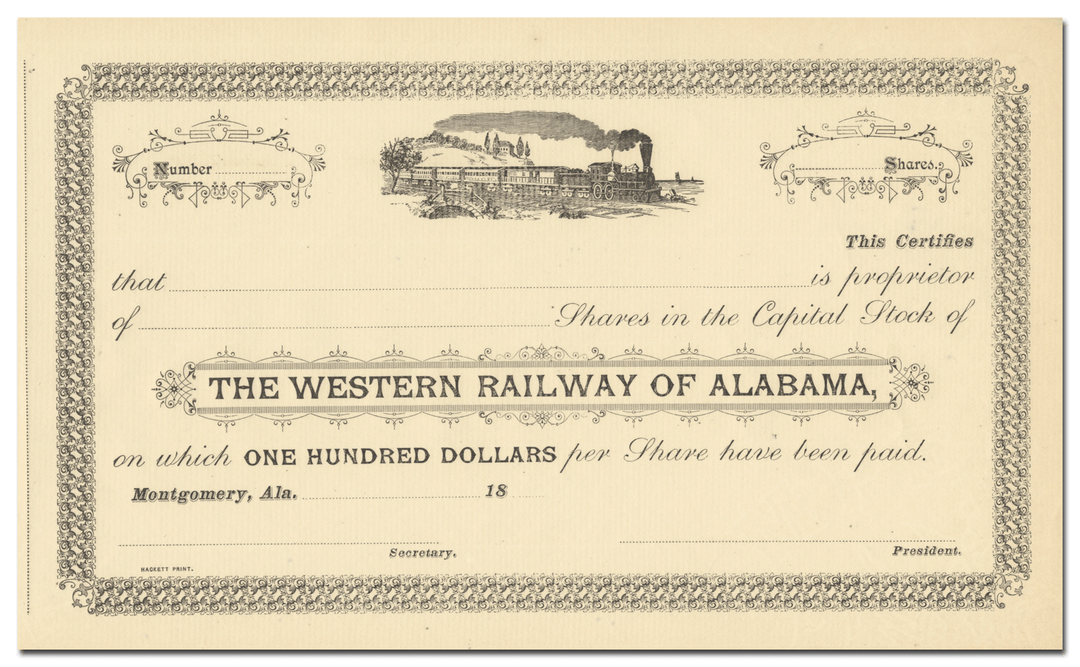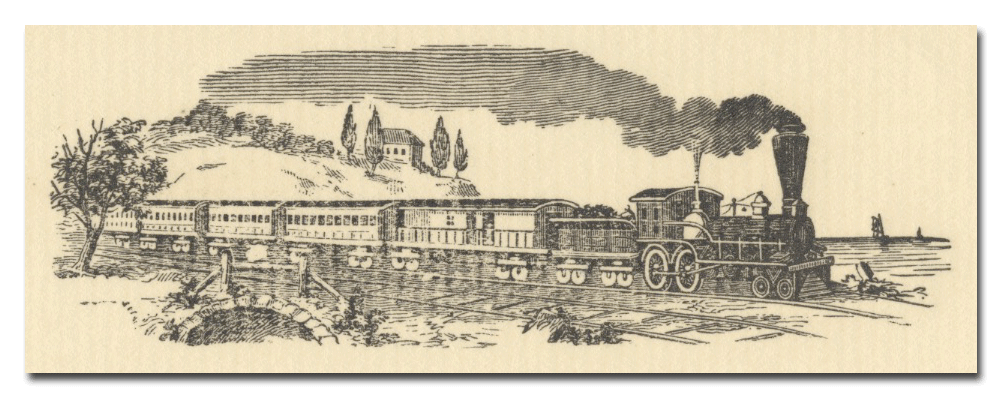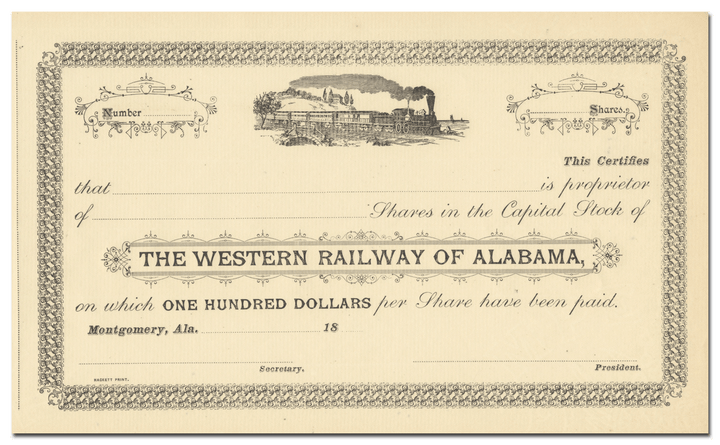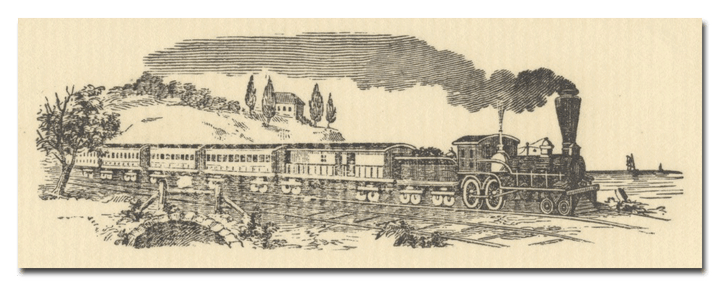Western Railway of Alabama
- Guaranteed authentic document
- Orders over $75 ship FREE to U. S. addresses
Product Details
CompanyWestern Railway of Alabama
Certificate Type
Capital Stock
Date Issued
Unissued, circa 1800's
Canceled
No
Printer
Hacket Print
Signatures
NA
Approximate Size
10 1/4" (w) by 6 1/4" (h)
Images
Representative of the piece you will receive
Guaranteed Authentic
Yes
Additional Details
NA
Reference
Historical Context
The Western Railway of Alabama (WRoA) traces its heritage back to the Montgomery Rail Road Company chartered on January 15, 1834. Robert Hanson's book, "The West Point Route," points out that it was envisioned to construct a new line from Montgomery to just across the Georgia state line at West Point along the Chattahoochee River. During 1835 and into 1836 the line's survey work was completed while actual construction commenced on March 1, 1836. Four years later, the first 32-mile section opened from Montgomery to Franklin. Almost immediately the railroad ran into trouble as it struggled to earn sufficient revenue to cover expenses. It was subsequently sold at foreclosure on July 9, 1842 and a new company chartered on February 13, 1843. Known as the Montgomery & West Point Rail Road (M&WP), at first it too experienced difficulties as it attempted to corral funding for the line's completion. Eventually, these efforts paid off with rails opening to Opelika in 1848 and finally West Point on April 28, 1851. The latter town became the interchange point with the Atlanta & LaGrange, predecessor to the Atlanta & West Point, when it reached there in 1854.
Little additional growth occurred although it did add one notable branch, a 29-mile extension from Opelika to Columbus, Georgia which opened in 1855. The railroad was spared the worst of the Civil War until July of 1864 when it was damaged by Union forces between Opelika and Chehaw as well as along its Columbus Branch. More extensive destruction was carried out in April of 1865. After the war M&WP forces worked quickly on repairs and finally had the entire railroad back in service by August 29th that year. They also re-gauged the property from 4 feet, 8 1/2 inches to 5 feet. Five years later, the M&WP merged with the Western Rail Road to form the Western Rail Road Company of Alabama. Just a few months later, in December, rails were pushed westward from Montgomery to Selma. Financial trouble found the road following the Panic of 1873 and it failed on April 1, 1874. A year later, on June 1, 1875, it was taken over in a joint agreement between the Central Rail Road & Banking Company Of Georgia and Georgia Railroad & Banking Company. In corporate maneuverings carried out by the new owners the Columbus Branch was acquired by the Central Rail Road and the Western Railway of Alabama was chartered on March 15, 1883 to operate the assets of the Western Rail Road Company Of Alabama. The use of broad gauge throughout the South lost its luster by century's end as railroad after railroad switched to the standard width of 4 feet 8 1/2 inches. The WRoA at first changed to 4 feet, 9 inches in the spring of 1886 and then soon afterwards reduced this by a half-inch more.
Related Collections
Additional Information
Certificates carry no value on any of today's financial indexes and no transfer of ownership is implied. All items offered are collectible in nature only. So, you can frame them, but you can't cash them in!
All of our pieces are original - we do not sell reproductions. If you ever find out that one of our pieces is not authentic, you may return it for a full refund of the purchase price and any associated shipping charges.









